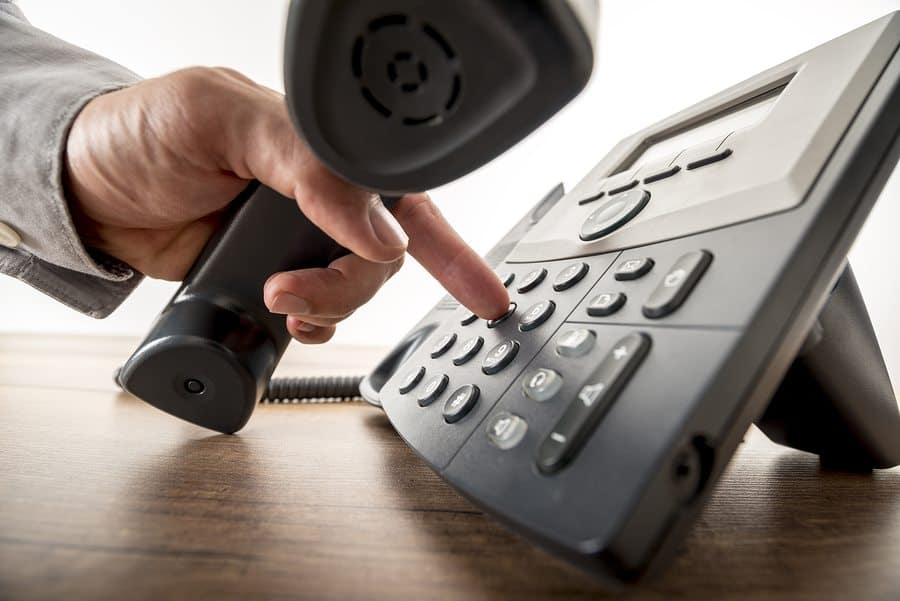 It’s a simple question: When is the best time to call leads? Too bad it doesn’t have a simple answer. In fact, when we really look at this question, we ought to be asking ourselves more questions so that we can get to a deeper understanding of sales leads and our cold calling strategy, particularly for aged leads.
It’s a simple question: When is the best time to call leads? Too bad it doesn’t have a simple answer. In fact, when we really look at this question, we ought to be asking ourselves more questions so that we can get to a deeper understanding of sales leads and our cold calling strategy, particularly for aged leads.
Now, I’m going to answer your question, but here are four more related questions that you really should be asking yourself, too.
Why Are You Calling?
The simple answer to the original question? Wednesdays at 4:30 p.m. But that’s hardly a blog post! And worse yet, it’s a misleading answer.
It might be an awful time for you, personally, to call — because the best time to call depends on why you are calling in the first place. And there’s not just one answer to that, is there?
One of the most conclusive studies to date is still that of Lead Response Management and MIT Fellow Dr. James Oldroyd, conducted in 2009 after three years of data collection. The first important takeaway? There are different best call days and call times for initial contacts and qualifying contacts.
Wednesday and Thursday both fared well, but each was better suited to a particular type of lead call. Between 4 and 5 p.m. was a strong overall call window, but first thing in the morning at 8 to 9 a.m. was just as great for qualifying leads, and call times between 2 and 6 p.m. also did comparatively well.
How Are You Calling Leads?
Not all phone calls are equal before the god of sales, so just how is it that you are calling these leads? Sure, time windows and the day of the week can certainly boost your sales growth performance, all other things being equal.
But if you’re manually dialing leads, if you’re not tracking your lead contacts, if you’re not charting a thoughtful trajectory for how and when you contact and nurture qualified leads to a sale, timing isn’t going to matter that much to your bottom line.
Instead, develop and refine a holistic process for working your leads. Get an autodialer, a reliable customer relationship management (CRM) tool, a strong and flexible call script, and quality supply of leads. When you have these keystone pieces of your operation in place, schedule your call blocks to maximize your results from both angles.
Does Timing Really Matter?
Of course, I could be contrarian and question the original question. According to a Velocify, a leading sales software firm, the difference in contact rates between the worst and the best call times was only 2.6 percent.
That led Velocify to an obvious conclusion that a sales agency radically restructuring its workplace to chase calls at so-called “optimal” time windows, could be counter-productive. Instead, the overall message gets hammered home: follow up quickly and follow up often.
Are Aged Leads Different from Real Time?
Another question worth asking: How does the time I call related to the time the lead asked for a quote. Is there a difference between aged and real-time leads? It turns out this makes a big difference.
If you happen to be Superman and can return a call on a brand new lead in a minute, you could reap a 391-percent conversion advantage. Even a speedy five-minute response time could lead to a 160-percent conversion advantage.
However, most of us aren’t superhuman, and unfortunately, conversion rates in the Velocify study plummeted after the one hour to call-back and got even worse after 20 hours to call-back for the Oldroyd study. Of course, this is rather unrealistic, as it’s simply humanly impossible to call every real-time lead back that quickly!
This means that there’s a real difference between real-time leads and aged leads. With real-time leads, there is truly an advantage to strike while the iron is hot. But this advantage deteriorates rapidly. And worse, leads get very put off by desperate and repeated sales calls in the days and week that follow.
As I’ve covered here before, an aged lead strategy remains a savvy way to get around this problem, contacting and qualifying leads in a less hectic environment with a different, volume-based sales strategy.
Ready to try an aged leads strategy? Fill your pipeline with a fresh supply of high-quality leads from The Aged Lead Store. You’ll find thousands of sortable aged leads, ready to boost your sales, whether your business is auto, life, final expense, health, Medicare supplement or homeowners insurance, annuities, auto warranty coverage, mortgage refinance, or solar installation.















